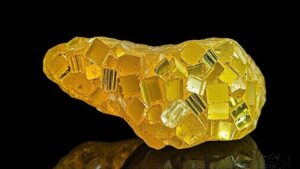Discovering fossilized trilobites in the Cambrian sedimentary beds of the Little Hatchet Mountains.
Discovering Fossilized Trilobites in the Cambrian Sedimentary Beds of the Little Hatchet Mountains
The Little Hatchet Mountains, located in southern New Mexico, are a treasure trove for rockhounds and mineral collectors eager to uncover the rich fossil history of the Cambrian period. Known for its diverse geological formations and exposures of ancient sedimentary beds, this region offers a unique opportunity to discover fossilized trilobites, some of the earliest complex life forms on Earth.
Understanding Trilobites and Their Significance
Trilobites were marine arthropods that thrived from approximately 520 million to 250 million years ago, particularly during the Cambrian period, which marked a significant increase in biodiversity. These creatures had segmented bodies, with three main parts: the cephalon (head), thorax (body), and pygidium (tail). Fossils of trilobites provide crucial insights into the evolutionary history of marine life, making them a valuable subject for collectors and researchers alike.
According to the Paleobiology Database, over 20,000 trilobite species have been described. The presence of trilobite fossils in specific strata can also indicate the geological age and environmental conditions at the time of deposition, thus aiding in stratigraphic studies.
The Geological Context of the Little Hatchet Mountains
The Cambrian sedimentary beds in the Little Hatchet Mountains are primarily composed of limestone, mudstone, and sandstone. These rock layers were formed by the deposition of sediments in shallow marine environments, creating a rich habitat for diverse marine life.
Notably, the exposure of the Bright Angel Shale and the equivalent formations enhances the likelihood of finding trilobite fossils. varying thicknesses of these layers, which can range from a few inches to over 1,000 feet, provide different ecological niches that supported trilobite populations.
Where to Find Trilobite Fossils
Rockhounds venturing into the Little Hatchet Mountains should consider the following locations that have yielded notable trilobite fossils:
- Near the base of the limestone cliffs, where erosion unveils fossilized remains.
- Along the riverbeds and dry washes, where sedimentary rocks have been exposed by weathering.
- At specific outcrops in the Bright Angel Shale formation, which is known for its fossil-rich layers.
Tips for Collecting Fossilized Trilobites
For those looking to collect trilobite fossils, here are some practical tips to enhance your experience:
- Bring the Right Tools: Equip yourself with a rock hammer, chisel, safety goggles, and a sturdy backpack to carry your finds.
- Be Patient: Fossil hunting often requires significant time spent looking over rock surfaces, so patience is essential.
- Follow Local Guidelines: Ensure that you are aware of any local regulations regarding fossil collecting to preserve the geological integrity of the site.
Ethical Considerations in Collecting
While collecting fossils can be an exhilarating hobby, its important to approach it with an ethical mindset. Consider the following:
- Leave No Trace: Preserve the natural environment by minimizing your impact and avoiding the destruction of fossil sites.
- Report Significant Finds: If you discover a notable fossil, consider reporting it to local geological or paleontological societies, as it could contribute to scientific knowledge.
Real-World Applications of Fossil Collecting
The study of trilobite fossils not only enriches our understanding of paleobiology but also has implications in various fields. For example, geologists studying these fossils can glean insights into historical climate conditions, sediment deposition rates, and the evolution of life in the marine ecosystem.
Also, fossil collecting promotes education and awareness about Earths history, fostering a deeper appreciation for biodiversity and conservation.
Conclusion
Exploring the Cambrian sedimentary beds of the Little Hatchet Mountains offers an exciting opportunity for rockhounds and mineral collectors alike to discover fossilized trilobites. By understanding the geological context, employing best practices in collecting, and respecting ethical guidelines, enthusiasts can contribute to both their personal knowledge and the scientific community. So pack your gear, get out there, and start uncovering the ancient history that lies just beneath the surface.



